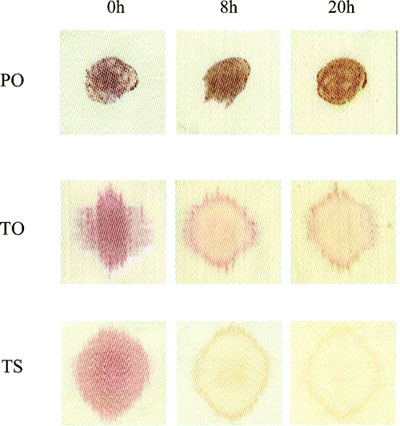Nereis virens, commonly known as sandworms, have a set of fang-like jaws with remarkable mechanical properties. These worms may be small, but they have a strong jaw for grasping, piercing, and tearing prey. The jaw material is high in protein with little mineralization, but despite this, the hardness and stiffness properties in the jaw tip are comparable to human dentin -- which is pretty strong!
 The material in the jaw tips of sandworms is even better than synthetic polymers. Though scientists have long studied the mechanical and structural properties of these jaws, the organic composition has previously been overlooked. Scientists are now interested in finding the organic composition and protein structures of the cutting edge of the Nereis jaw. They have found that zinc plays an important role in the mechanical properties of Nereis jaws, by binding to bundles of protein fibers rich in histidine (an important amino acid), and that removing the zinc decreases the hardness by over 65%.
The material in the jaw tips of sandworms is even better than synthetic polymers. Though scientists have long studied the mechanical and structural properties of these jaws, the organic composition has previously been overlooked. Scientists are now interested in finding the organic composition and protein structures of the cutting edge of the Nereis jaw. They have found that zinc plays an important role in the mechanical properties of Nereis jaws, by binding to bundles of protein fibers rich in histidine (an important amino acid), and that removing the zinc decreases the hardness by over 65%.
By learning about these sandworm jaws, scientists hope to use this knowledge to design stronger and better materials.
Sources: Journal of Experimental Biology American Chemical Society


 From Top to Bottom: Images of red wine stains on Plain Wool (PO), Wool coated with a generic stain-fighting chemical (TO), Wool coated with the new nanoparticle coating (TS) after 0, 8, and 24 hours under simulated sunlight.
From Top to Bottom: Images of red wine stains on Plain Wool (PO), Wool coated with a generic stain-fighting chemical (TO), Wool coated with the new nanoparticle coating (TS) after 0, 8, and 24 hours under simulated sunlight. So how hot is hot? You can measure the heat of a chili pepper with your tongue, but how accurate is that? Everyone's definition of "hot" is different. Scientists are now using a new carbon nanotube-based sensor to quantify the "heat" of chili peppers.
So how hot is hot? You can measure the heat of a chili pepper with your tongue, but how accurate is that? Everyone's definition of "hot" is different. Scientists are now using a new carbon nanotube-based sensor to quantify the "heat" of chili peppers.